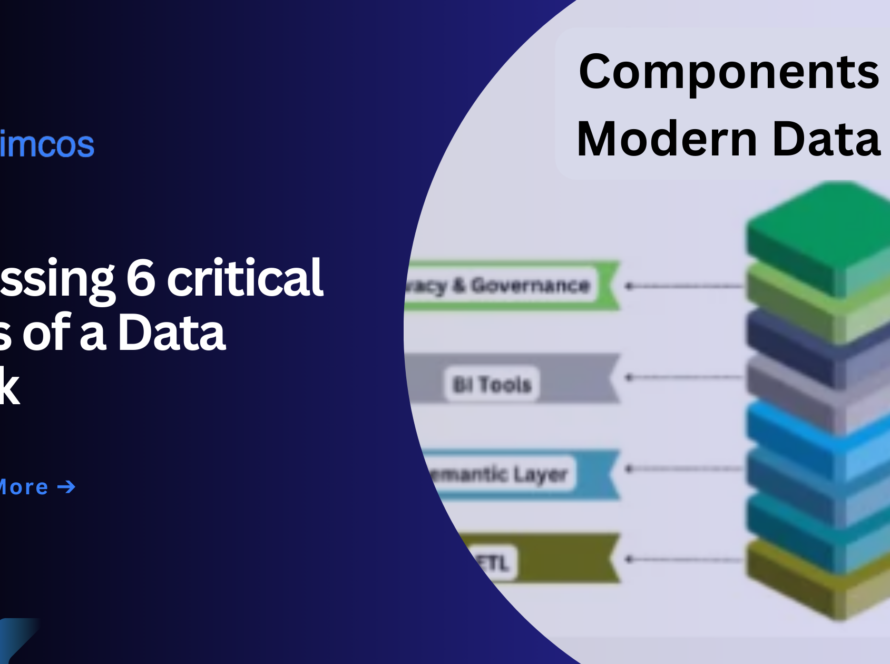Today’s businesses depend on enormous amounts of data that constantly changes to make important choices. Data is stored or processed in a different system than where it’s collected. This means data needs to be quickly loaded or captured from one system and moved to another. This data from many systems is combined to get useful insights. Change Data Capture (CDC) captures this changed data and sends it to another system. These systems are typically called source and target, with data flowing from the source to the target.
Table of Contents
What is Change Data Capture?
Change data capture, in general, is a technology that monitors the updates taking place in the data of any system. Instead of continuously copying all data, it concerns itself only with those specific changes brought about by inserts, updates and deletes. This saves on resources and allows quicker updates in other systems depending on the data. CDC mostly provides information on what is new or different and sends that information down the line to assure faster and more efficient data updates.

Main reasons CDC is becoming popular
• Real-Time Data Synchronization:
CDC provides a competency for an organization to capture the changes of data in real time or near real time and proliferate it. It’s a key element in keeping the data up to date across systems and applications, which assists in better decision-making and operational efficiency. Because of the recurring tracking of changes, CDC facilitates real-time analytics and reporting. These, in turn, help a business respond quickly to new insights and changing market conditions.
• Efficient Data Integration
In traditional methods of data integration, there is usually bulk data transfer or loading of full data. These are normally resource-intensive and take a longer time. CDC, in contrast, involves capturing the changes alone in data, thereby reducing the volume of data to be processed and transported. As such, it minimizes the impact of data integration on the performance of the systems, keeping costs as low as possible for data integration and storage.
• Reduced Latency
Change data capture reduces latency between the time of change to data and when changes are reflected in the downstream systems. Near real-time update capability that is important for many applications that require information that is up-to-date, such as fraud detection, customer relationship management and supply chain management.
• Improved Data Quality
The CDC, in that sense, ensures that processes of data integration capture the changes alone, hence keeping the information accurate and consistent. It reduces the occurrence of discrepancies and errors in data brought about by outdated or partial data.
• Scalability
CDC lends itself to scalable architecture for data, since an organization is able to manage and integrate large volumes of data with efficiency using CDC. As data grows, CDC handle increased change volumes without the need for full data reloads, thus making the scaling of operations easier.
• Enhanced Analytics
Since change data capture provides access to the most current data, analytics conducted by a company are not only more accurate but timely. Therefore, better insights and forecasts derived from such data serve as better grounds for strategic decisions.
• Cost Efficiency
As long as change data capture applies only to changes in data and does not imply the complete loading of data, it reduces the cost of storing and processing data on integration. Thereby, resource consumption is minimized and data management costs are optimized.
• Flexibility in Data Management
CDC provides flexibility on how changes of data flows are handled between systems. It also allows organizations to adapt to the change in business requirements and to integrate data from and to various sources and destinations without significant changes.

Change Data Capture in ETL
ETL processes involve the extraction of datasets in entirety from any source system, like a database, into a data warehouse for analysis. It’s alright when working with smaller datasets that seldom get updated, but in the event of exponential growth in data volumes and higher update frequency, the traditional ETL methods prove slow and inefficient. Resources are wasted over the re-transferring and re-processing of the same, unchanged data.
Change Data Capture changed the pattern of ETL by setting its focus on capturing new or modified data from its last update.
1. Extract
On contrast to replicating the whole dataset, CDC identifies and extracts only the new data or changed data in the source system continuously or at intervals.
2. Transform
Like in traditional ETL, extracted data might be transformed into a format compatible with the target system in a staging area. In contrast, some of today’s ETL tools that offer CDC functions perform their transformations directly within the target system using an ELT approach.
3. Load
The transformed data captured by CDC is loaded to the target system, such as a data warehouse or data lake, from which it would be readily made available to business intelligence and analytics tools.
With Change Data Capture, organizations perform the smoothing of ETL processes, improvement in data quality and timeliness and at the same time offering businesses a competitive advantage in today’s data-driven world.
Benefits of CDC
Change Data Capture means a load of advantages. Since it focuses on the changes to the data, it keeps the systems updated very fast and minimizes downtime. The businesses also move faster with quicker analytics since there is processing of only new data. CDC keeps consistency in the data across systems. Since it captures only changes to the data, it reduces the need for storage and hence reduces costs.
i) Reduced Downtime
Change Data Capture eliminates this by only considering the changes made on the system. In turn, it allow for the constant updates to run behind the scenes without the core operational systems being unavailable.
ii) Faster Analytics
For example, data analysis using conventional methods involves the processing of whole datasets; a process that is time and resource-consuming. CDC simplifies this by capturing only the delta or difference in data from a similar instance of data that was updated earlier. This reduces the amount of information to be analysed.
iii) Data Consistency
With CDC, the source and target have constant consistency across all data systems, whether it be inventory management, order tracking, or customer databases. This avoids inconsistencies and allows a more coherent view of your operations.
iv) Lower Storage Costs
Traditional data transfers involve copying the whole dataset for backup and historical analysis, which is a waste of storage space. CDC concerns itself with capturing only changes within the data, hence reducing the overall footprint of data. This means less demand for storage, amounting to cost savings for your organization.
CDC Methods
Determining the best method for capturing changes of data is a must, as more than 80% of companies are moving to multiple cloud platforms by 2025. This is so important because it is important to ensure that data is copied accurately across these different cloud environments.
For large companies, the more common databases would be SQL and PostgreSQL, which would prefer CDC log-based since they are considered reliable and process a high volume of data. But it all depends on your setup and needs.
The following list describes different types of CDC:
1. Date Column Differences (Audit Columns)
This CDC technique uses timestamps in the data itself. Dates, like “created” and “last updated,” are added to every record. You will be able to identify the changes by comparing these timestamps. New entries will have a recent “created” date, whereas updates will reflect the change of the “last updated” field. This simple method will give you an understanding of which data has changed and when, but not what values were replaced.
2. Table Differences (Deltas)
The table differences approach does basically the same thing as the date column method, but it builds a system that enables monitoring of changes in the database. Instead of using a specific date field, this approach compares snapshots of whole data over time. Special utilities called tablediff utilities take these snapshots then compare them to identify what data has been inserted, modified, or deleted. After finding out which data has changed, these changes are applied to a separate system.
3. Trigger-Based CDC
Trigger-based CDC depends on using triggers to track changes in data from the database. Normally, triggers are chunks of code that get executed automatically once certain events occur within the source system, such as create, modify, or delete operations.
4. Log-Based Change Data Capture (CDC)
Log-based CDC: It is a technology that monitors the changes occurring in a database. It works by reading transaction logs created by the very core of the database system for recovery in case of a crash. Log-based CDC parses transaction logs to identify what data has been added, changed, or deleted and uses this information to update another system with the latest changes.

Change Data Capture is a technology that revolutionizes enterprise data management and integration by capturing just the changes, not whole data sets. This will definitely ensure better real-time data synchronization, higher quality of data and lower costs of storage and processing. Efficient management of data updates means quicker analytics, consistent data and scaling with big data growth. From log-based to trigger-based, a host of different approaches to CDC exist, each utilized uniquely by every organization in its own way. Adapting to CDC brings harmony into the ETL processes, allows making better business decisions and keeps systems nimble in today’s dynamic data environment.
How does Himcos help?
CDC helps logistics companies work better by giving them real-time information. This lets them manage inventory, plan deliveries, analyze data and save money – all at the same time. Himcos simplifies capturing real-time data changes for business. We design pipelines to grab only new or updated data, transform it for your systems and deliver it securely. Our experts also help to plan CDC strategy, analyze data sources and ensure data quality throughout the process, giving you a hassle-free path to real-time data insights.



